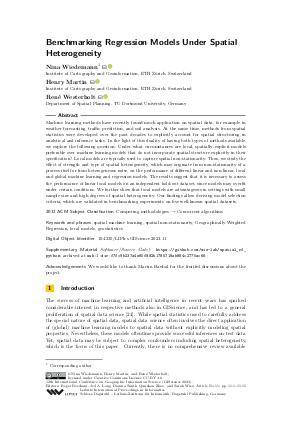@InProceedings{wiedemann_et_al:LIPIcs.GIScience.2023.11,
author = {Wiedemann, Nina and Martin, Henry and Westerholt, Ren\'{e}},
title = {{Benchmarking Regression Models Under Spatial Heterogeneity}},
booktitle = {12th International Conference on Geographic Information Science (GIScience 2023)},
pages = {11:1--11:15},
series = {Leibniz International Proceedings in Informatics (LIPIcs)},
ISBN = {978-3-95977-288-4},
ISSN = {1868-8969},
year = {2023},
volume = {277},
editor = {Beecham, Roger and Long, Jed A. and Smith, Dianna and Zhao, Qunshan and Wise, Sarah},
publisher = {Schloss Dagstuhl -- Leibniz-Zentrum f{\"u}r Informatik},
address = {Dagstuhl, Germany},
URL = {https://drops.dagstuhl.de/entities/document/10.4230/LIPIcs.GIScience.2023.11},
URN = {urn:nbn:de:0030-drops-189064},
doi = {10.4230/LIPIcs.GIScience.2023.11},
annote = {Keywords: spatial machine learning, spatial non-stationarity, Geographically Weighted Regression, local models, geostatistics}
}

 Creative Commons Attribution 4.0 International license
Creative Commons Attribution 4.0 International license































